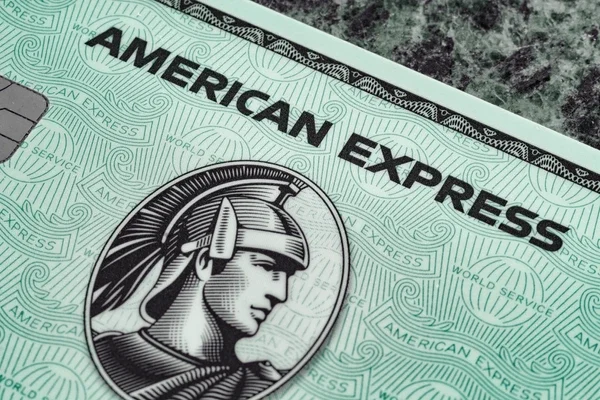American Express
At Drew, we like to own businesses that can be held for a long time without the need for constant tinkering. American Express is one of those. It has been in our funds since inception, and it exemplifies the kind of company we look for: a durable franchise with a wide moat, high returns on invested capital, and a business model that deepens with time. In an industry often associated with scale-driven incumbents like Visa and Mastercard, AmEx has carved out a distinct position. It is both a card issuer and a payments network, a closed-loop model that allows it to capture more of the economics of a transaction while keeping tighter control over the customer experience.
Visa and Mastercard run “open-loop” systems: they rely on banks such as Chase or Wells Fargo to issue cards, and they mainly monetize the network rails. AmEx, by contrast, manages both sides of the equation. It issues cards directly, it negotiates with merchants, it processes payments, and it retains the customer relationship. This difference may appear subtle, but it has created a system where AmEx can extract a higher merchant fee (over 3% on average) and then recycle much of that back into member benefits: travel rewards, hotel points, concierge services, and other perks. The closed loop gives AmEx the power to directly shape loyalty programs, and that has proven decisive.
On the surface, AmEx looks like a high-cost producer. Its merchant fees are higher than Visa or Mastercard’s, and historically, this has been a point of friction. Many merchants resisted accepting AmEx cards because the economics seemed punitive. But the way those fees are used gives a clearer look into Amex’s moat. In 2019, 59% of AmEx’s costs were tied to member benefits. By 2023, that figure was 68%. In 2025, it is over 70% and still climbing. While AmEx charges merchants more, it redistributes most of that back to cardholders in the form of tangible value. Customers don’t feel gouged; they feel rewarded
This explains why AmEx has been able to maintain loyalty rates that competitors envy. Chase Sapphire Reserve and similar cards tried to copy the premium rewards structure, but they cannot fully replicate it because they do not control the entire ecosystem. Visa and Mastercard provide network rails, but the banks that issue their cards decide the rewards. The result is inherently fragmented.
For decades, the main knock on AmEx was acceptance. Merchants balked at the higher fee structure, and the perception was that AmEx cards were limited to travel, luxury retail, and significant corporate spend. That has changed dramatically. Beginning in the late 2010s, AmEx forged partnerships with acquirers like Stripe and Square. These intermediaries distribute AmEx acceptance across millions of small and medium-sized merchants. Today, AmEx is accepted at 99% of U.S. merchant touchpoints.
The internal economics of AmEx acceptance are revealing. Roughly 87% of its accepting locations come from third-party acquirers, but these account for just 27% of volume. The remaining 13% of locations are large enterprises signed up directly by AmEx’s own sales team, which generates 73% of volume. The lesson is clear: AmEx gains broad acceptance by sharing economics with intermediaries, but it still commands the lion’s share of spend through direct merchant relationships. The network is both broad and deep.
The outcome of this system is unusually high returns on equity. Over the last 15 years, AmEx has averaged between 25% and 35% ROE, dipping below 15% only in periods of severe stress such as the global financial crisis. Few financial businesses sustain those levels without resorting to heavy leverage. AmEx does it through the strength of its model: recurring merchant fee income, high switching costs embedded in loyalty programs, and disciplined underwriting on its lending book.
At today’s valuation, AmEx is available for roughly 22x trailing earnings. American Express sits in broad daylight as an unsexy but robust mid-teens compounder. It is not a story about management genius or breakthrough innovation. It is a story about a company with an inherent advantage that grows stronger over time. Every additional dollar of merchant acceptance widens the moat. Every additional benefit tied to cardholder loyalty makes switching harder. And every incremental data point from the closed-loop network sharpens AmEx’s ability to target and price risk.
What stands out about AmEx is the internal DNA of the business. Unlike many financial firms that rely on scale and access to capital markets, AmEx builds durability through the self-reinforcing structure of its model. Member rewards grow in line with merchant economics. Acceptance grows in line with volume. Returns on equity stay high because the machine keeps feeding itself.
AmEx is also unusually positioned for macroeconomic cycles. If interest rates decline, the present value of its earnings rises, and the stock should respond. If rates rise due to inflation, AmEx still participates because its revenues are tied to consumer and corporate spending. Its model retains toll-road characteristics: when spending rises, revenues rise. This provides a natural hedge against many of the macro risks that destabilize other financial institutions.
No company is risk-free. For AmEx, the biggest concern is competition: Visa, Mastercard, and the large banks will continue trying to erode its merchant fee advantage. Regulatory scrutiny on interchange fees could also increase over time. The lending business exposes AmEx to credit risk, and recessions will inevitably lead to higher losses. Finally, its brand, while strong, is more U.S.-centric than Visa or Mastercard’s, leaving it somewhat less diversified geographically.
But these risks are manageable. AmEx’s ability to recycle merchant fees into loyalty has proven durable. 2% of the 3% that merchants are charged to accept Amex is recycled back to the customer. Its credit book is weighted toward higher-quality borrowers. And international expansion, though slower, provides optional upside rather than a critical dependency. The structure of the business itself mitigates much of the downside.


